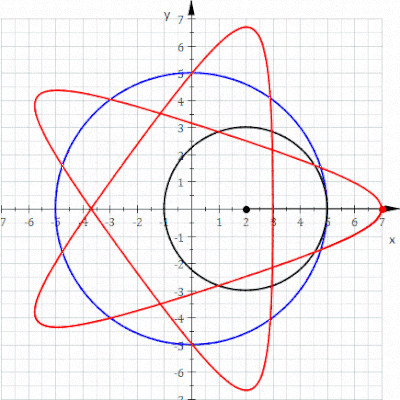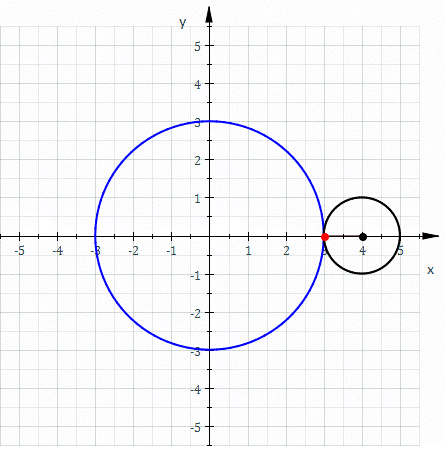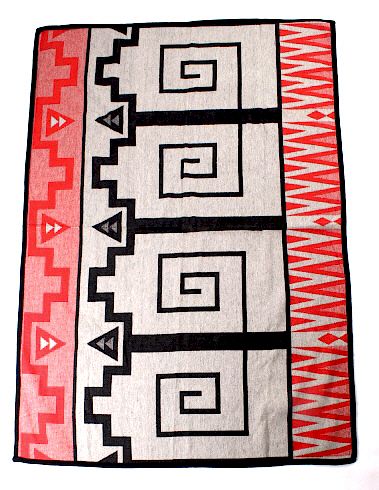Fret Key
Notes: Game on...on the radio...Athletics and Angels...bottom of first...Trout up...Angels up one on Lastella's lead off home run...Angels 1-0...K...Ohtani up...K...Pujols up...a quote from me from yesterday's post...base hit...Calhoun up...extra infielder got bloop on bounce and threw out Calhoun...to top of second
quote
...'noting' things is hit and miss...if you have something in mind because of a topic, likely the thing will get notice
unquote
it's true, and maybe a real world benefit of pondering motifs!...I see that question, 'what good is any of this motif stuff?'...I dunno, but pondering beatyls. I happened on Shintoism, and kamis, and, those famous arch gates, an emblem on all the Japaenese tourist posters!...
quote
A torii (鳥居, literally bird abode, Japanese pronunciation: [to.ɾi.i]) is a traditional Japanese gate most commonly found at the entrance of or within a Shinto shrine, where it symbolically marks the transition from the mundane to the sacred.

The famous torii at Itsukushima Shrine, a Ryōbu-style tori.
https://en.wikipedia.org/wiki/Torii
unquote
so, so just a bit ago I'm driving back on Newhope from the gym, and out of the corner of my eye, I see one of these in the front yard of a corner house bordering the road on the left...not very big, tall as a swing set...go figure...and there's a related thing/motif...
quote
Shimenawa (標縄・注連縄・七五三縄, "enclosing rope") are lengths of laid rice straw or hemp[1] rope used for ritual purification in the Shinto religion. They can vary in diameter from a few centimetres to several metres, and are often seen festooned with shide. A space bound by shimenawa often indicates a sacred or pure space, such as that of a Shinto shrine.[2]
https://en.wikipedia.org/wiki/Shimenawa
unquote
As score a run, and have runners at second and third with one out...hmmph...I haven't seen any ropes around things, yet...lol...fly out...runners stay put...Angels 1-1...base hit...two runs score...As 3-1...
quote
http://kikuko-nagoya.com/html/futami-shimenawa.html
unquote
another run...As 4-1...pop out...to bottom of second...I first noticed one of these ropes looking at a waterfall pic in Japan...the caption said one was across the top, and I thought, that's all Yosemite needs, another graffiti...I'm of the "Nature should be left natural' school...thing of the rope is, it's twisted, which makes it a lookalike of the running greek key, step fret...and, and, I found a new search word for step frets...I have now like a half dozen, and I just never thought of this one, but looking at ancient Chinese pottery, I found it...ridiculously simple...'key fret'...I've run that by the Andeans and Mesoamericans, but it doesn't have the evocative charm, magic, of 'step fret'...'google search' can be fastidious too!...taciturn as heck...anyway, 'search key fret china' brings up a lot, as does just key fret...feel like I've found where the herd is browsing on the mysteries of step frets/fret keys...Fletcher was up, and I don't know what he did...Lucroy up...fly out...1,2,3...to top of third...oh, I'm on an 'outdated browser' on the laptop...trying to source the Brittanica take I found with the tablet, search: key fret...Brittanica notes the motif is world wide...here's wiki's take...
quote
Meanders are common decorative elements in Greek and Roman art. In ancient Greece they appear in many architectural friezes, and in bands on the pottery of ancient Greece from the Geometric Period onwards. The design is common to the present-day in classicizing architecture. The meander is a fundamental design motif in regions far from a Hellenic orbit: labyrinthine meanders ("thunder" pattern[3]) appear in bands and as infill on Shang bronzes, and many traditional buildings in and around China still bear geometric designs almost identical to meanders.
They were among the most important symbols in ancient Greece; and perhaps symbolized infinity and unity; many ancient Greek temples incorporated the sign of the meander. Greek vases, especially during their Geometric Period, were probably the main reason for the widespread use of meanders; alternatively, very ocean-like patterns of waves also appeared in the same format as meanders, which can also be thought of as the guilloche pattern. The shield of Philip II of Macedon, conserved in the museum of Vergina, is decorated with multiple symbols of the meander. Meanders are also prevalent on the pavement mosaics found in Roman villas throughout the Roman empire. A good example is at the Chedworth Roman Villa in England, leading many[who?] historians to believe that the pattern was part of the original inspiration for the Latin "G" character[citation needed].
https://en.wikipedia.org/wiki/Meander_(art)
unquote
oh, there that is, the G in the Masonic symbol...compass, square, with G in the middle...I had noted G looks like a fret...and was suspicious, and, there is a likelihood...'likelihoods' are one step above I 'dunnos'...lol...what is guilloche?...brb...heck, heck, things going to hell for Angels...another As run...As 5-1...oh, note this curio:
quote
Printed: on bank notes, currency or certificates, etc., to protect against forged copies. The pattern used in this instance is called a spirograph in mathematics, that is, a hypotrochoid generated by a fixed point on a circle rolling inside a fixed circle. It has parametric equations. These patterns bear a strong resemblance to the designs produced on the Spirograph, a children's toy.
https://en.wikipedia.org/wiki/Guilloch%C3%A9
unquote

https://en.wikipedia.org/wiki/Hypotrochoid
unquote
I was just at a Mysterion site found with 'key fret' search that goes on about something like this...site a curio as it goes on about greek keys much as I have about step frets, but adds a lot of New Age commentaries...I link to commentaries...the site authors find things...but reticent myself about making 'inspired observations'...anyway, imagine that circle rolling along on a path, and that line leaving behind a design...it works out to look like a sine wave...and with some trickery of lines representing different octaves, the design alters into a box after box wave...this the designs, the radio wave oscilloscope lookalikes on the Puuc temples I noted...but, this trick could be done just to lay out a running design...something else for the artisans bag of tricks!...
quote

https://en.wikipedia.org/wiki/Epicycloid
unquote
quote

https://en.wikipedia.org/wiki/Cycloid
unquote
that trick can be done with squares, triangles, anything...see next wiki for examples...
https://en.wikipedia.org/wiki/Cyclogon
As made out after more runs...Lastella a hit...Trout up...
quote
A Rosetta orbit is a complex type of orbit. Theoretically, an object approaching a black hole with an intermediate velocity (not slow enough to spiral into the hole and not fast enough to escape) will enter a complex orbit pattern, bounded by a near and far distance to the hole and tracing an oscillating pattern known as a hypotrochoid.
In quantum mechanics, the Rosetta orbit is a solution for spherically symmetric (except 1/r) potentials.
https://en.wikipedia.org/wiki/Rosetta_(orbit)
unquote
hmmph...a Rosette curio for the Rosette lore...Troutahere!...fifteenth for Trout...homerun...As 7-3...Ohtani with a hit...mosquitoes g'ttn me...some windows gone on porch...own fault...forgot to drain the boat...Ohtani waved home but given stop sign first...outfielder dropped ball fielding Albert's hit...well, runners second and third...Fletcher sneaks a hit through the middle...As 7-5..and, and Maya's, my dog's, fleas are nibbling my feet...it's summer...line out...to top of fourth...
quote
Spirograph is a geometric drawing toy that produces mathematical roulette curves of the variety technically known as hypotrochoids and epitrochoids. It was developed by British engineer Denys Fisher and first sold in 1965.
The name has been a registered trademark of Hasbro Inc. since 1998 following purchase of the company that had acquired the Denys Fisher company. The Spirograph brand was relaunched worldwide with original product configurations in 2013 by Kahootz Toys.


Several Spirograph designs drawn with a Spirograph set using multiple different colored pens
https://en.wikipedia.org/wiki/Spirograph
unquote
that, that's suspect...those designs are a lookalikes with the cymatic designs, diatoms, flowers...could the Pythagoreans have had that 'toy'?...brb...Angels up...one out...Regnifo up....hit...Lastella up...W...Trout up...I was going to do a bit about King Tut's wooden chest...happened on caption questioning why the Lion Gate Lions are 'standing' on the two altar 'things'...'elements' are not only 'things', but what things are 'doing'!...fly out...Ohtani up...As might p...woops...outahere!!!...I was gonna say, 'As will pitch around Ohtani'...not so, and, home run...Angels 8-7...lol...Albert up...
quote
http://www.ancient-egypt.co.uk/cairo%20museum/cm,%20tutankhamun,%20furniture/pages/tutankhamun%2C%20painted%20box%203.htm
unquote
anyway, game is top of fifth...Angels 8-7...there, on the box, the two sphinxes are standing on defeated foes...there are a whole bunch of elements in that scene...but, circles being the subject, brings attention to the rosettes the chest has...I've found that the King Tut era was the same era that the Minoan art shows up in Egypt, the frescos with bull jumping and split rosettes (epsilons)?, and, that ceiling of Amenanotep with the bull heads and rosettes...back a couple posts...the rosette friezes could be made with the underlying grid, I'm guessing, or maybe with that spirograph idea, I'm long reaching!...I dunno...a good artisan can do things right out of their head...keeping things organized and neat....see calligrapher clips on web...lesser sorts use grids and cribs, like a spirograph...I suspect Aegean artists began to influence Egyptian ones, and visa versa, around King Tut's time...some support for this I've found on web...for sometime...where's the game?...Lucroy up...and I was somewhere in Japan, China, with the key fret search...China is so huge...and so studied, by Chinese themselves...the historians there are all specialists...no one can gather it all in under one book's covers...but when I started looking up Chinese fret keys, it was like, how could I miss all those!...famously, the Chinese stylize their landscapes, and the clouds lookalikes with frets...Angels made out...top of seventh?...I hope...I've gone on too long for a post...search fret key Chinese clouds...
quote
This post is a tribute to Mark Ruffner’s interest in Greek Key designs. These usually squared-off patterns in countless variations have been used since antiquity to create borders and frames in almost every kind of design.
Since moving to Taiwan, I have noticed that these patterns are also ubiquitous in Chinese art. Here then is a brief look at their appearance on small household articles, ignoring for the present their role in ancient Chinese art and architecture.

A statue of Guan Yin is set off with this wooden case, enlivened by much gilding and surrounded by the squared key border.
http://roadtoparnassus.blogspot.com/2012/09/chinese-meander-or-greek-key-patterns.html
unquote
Guan Yin is Kannon I think...yep...Lucroy beind the plate is keeping Angels in game...throw out at second...bloop double...defense let down...runners second and third...As made out...oh, only bottom of sixth now, Angels up...Regnifo lead off hits...Lastella up...
quote

Clouds are considered lucky and so feature heavily in Chinese pictures and symbolism. This is most likely down to the obvious connection that clouds bring the much needed rain to water the crops. It sounds the same as 运 yùn ‘luck, fortune, fate’.
https://www.chinasage.info/symbols/nature.htm
unquote
adjusted search: clouds Chinese paintings...I'm even taking breaks to eat peanuts...how long a post can be?...fly out...Trout up...maybe frets are clouds, the steps rain...I dunno...but I found a marvel...oh...Trout K on bad call...Ohtani up...K...to top of seventh...
quote

Featured in this lot is a beautiful rare Najavo Indian pattern Pendleton wool blanket. Pendleton Woolen-Mills has produced wool blankets, robes, etc. since the early 1900's where they opened their first factory in Pendleton, Oregon. This blanket shows traditional Navajo patterns with a red, gray, and black color scheme. The blanket is in very good condition and measures 68" x 48".
https://www.bidsquare.com/online-auctions/north-american-auction/rare-navajo-indian-pattern-pendleton-wool-blanket-1188534
unquote
the blanket has everything!...steps, frets, triangles...it is more Andean/Mesoamerican than Andean/Mesoamerican textiles!...and, the Navajo have names for the motifs/elements...over all it is called the storm pattern...search: Navajo storm pattern...for tomorrowmorrow...time to feed Maya, my dog, and get a snack...As made out...bottom of seventh...Calhoun fly out...Fletcher up...fly out...to top of eighth....update: Angels 10-9 on walk off double in bottom of ninth...put a halo over this one...
:)
DavidDavid








No comments:
Post a Comment